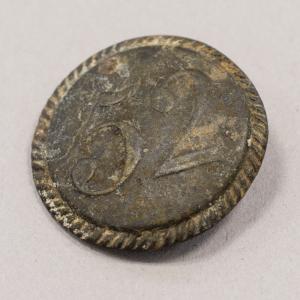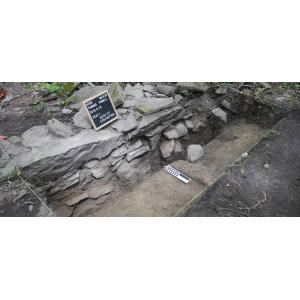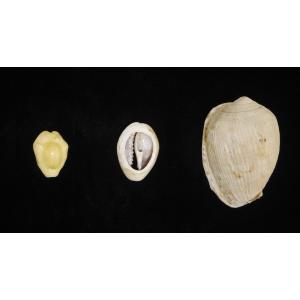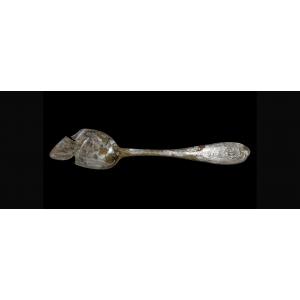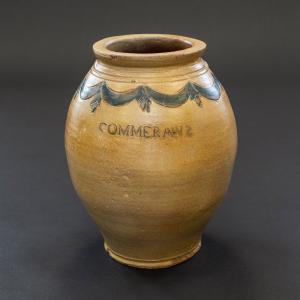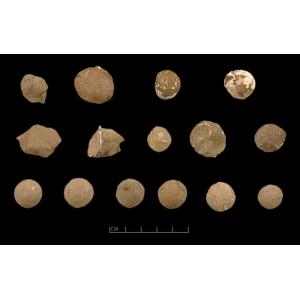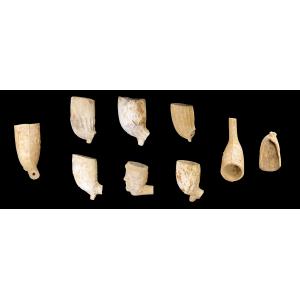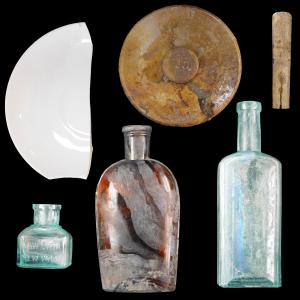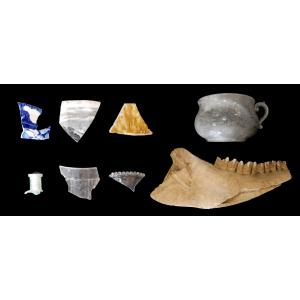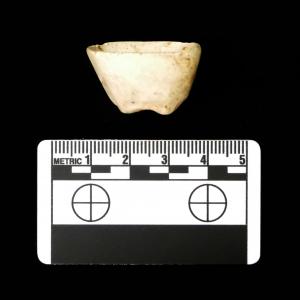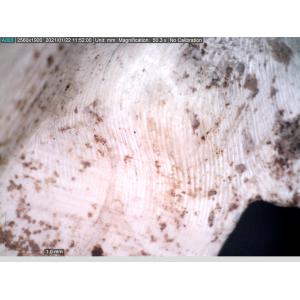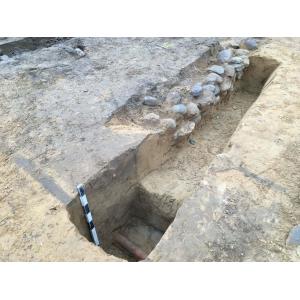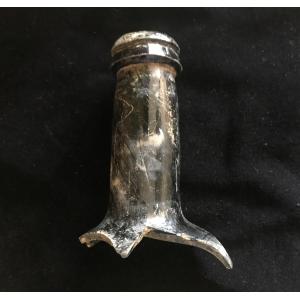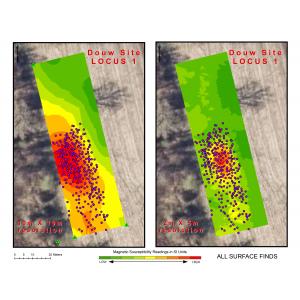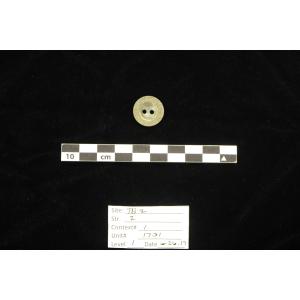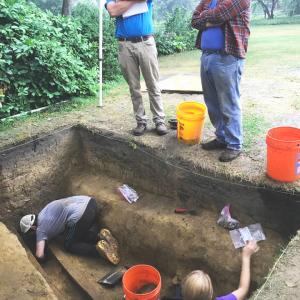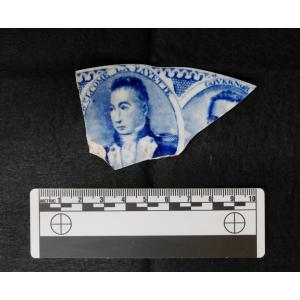News Articles
From Bunker Hill to Ground Zero: A Button’s Journey Through History
Published June 2, 2025 | Historical Archaeology
NYSM Archaeologist Featured in the Times Union for Research Identifying 19th-Century African American Farms
Published February 5, 2024 | Historical Archaeology
NYSM Historical Archaeologist Michael Lucas and his team were recently featured in the Times Union for their fieldwork and research leading to the identification of Albany-area farms owned and operated by African Americans during the 1800s. Dis...
NYSM Archaeologist Talks Trash with the New Amsterdam History Center
Published January 31, 2024 | Historical Archaeology
On Thursday, February 8 from 6-7:30pm, NYSM Historical Archaeologist Michael Lucas joins the New Amsterdam History Center for the online event, "Trash Talk: A Lively Discussion of 17th Century Refuse, Recycling, and the Reshaping of Manahatta's ...
Reticulated Cowrie Helmet Shells: A Small Reminder of the Link between New York and the Caribbean
Published February 23, 2023 | Historical Archaeology
Billions of Moneta and Annulus cowries from the Indian Ocean were traded for enslaved people along the west coast of Africa from the 15th through 19th centuries. Much larger reticulated cowrie helmets, native to the w...
African American Farmers in the Upper Hudson Valley, 1820–1880
Published February 7, 2023 | Historical Archaeology
Agriculture has been central to the cultural history of the Hudson River Valley from the first indigenous farmers to 17th-century Dutch farms, and finally through the development of modern mechanized farming during the 19th century. Regrettably, t...
Science Tuesday: Uncovering Commeraw Stoneware
Published August 2, 2022 | Historical Archaeology
New York stoneware vessels bearing the name “Commeraw” have been included in collections for years, but more recently they have become recognized for their historical importance. Thomas Commeraw was an African American potter who worked in the Cor...
New Acquisition: Revolutionary War Military and Domestic Artifacts from Long Island
Published September 7, 2021 | Historical Archaeology
In August 2021, the New York State Museum acquired 200 artifacts from the LAMAR Institute in Savannah, Georgia. These artifacts are the result of the only systematic archaeological study of three Revolutionary War battlefield sites on the north sh...
ScienceTuesday: What We Can Learn from Ball Clay Tobacco Pipes
Published May 11, 2021 | Historical Archaeology
Ball clay tobacco pipe fragments are one of the most common artifacts found on archaeological sites from the 17th through the 19th centuries. There are many reasons for this including the fact that most people smoked, tobacco pipes were relatively...
New Acquisition: 420 Albee Square Collection
Published May 6, 2021 | Historical Archaeology
In March of 2015, archaeologists excavated 3 wells, 3 cisterns, and one possible privy at 420 Albee Square in Brooklyn, New York. The New York State Museum acquired the resulting collection in 2020. The artifacts recovered from the excavations ill...
New Acquisition: The Pierce House Collection
Published March 8, 2021 | Historical Archaeology
The NYSM Historical Archaeology Collection recently acquired the Pierce House Collection containing a wide variety of mid-nineteenth century household artifacts from a farmstead located in the town of Lewis, Essex County, New York. Documenting&nbs...
Science Tuesday: The Power of a Closer Look - Unearthing Personal Possessions of Enslaved African Americans
Published February 11, 2021 | Historical Archaeology
Many of the Historical Archaeology Collections at the New York State Museum were recovered during compliance work prior to the construction of roads, buildings, and other structures. Larger compliance projects can result in the recovery of 100,000...
The Power of a Closer Look
Published January 26, 2021 | Historical Archaeology
Many of the historical archaeology collections at the New York State Museum were recovered during compliance work prior to the construction of roads, buildings, and other structures. Larger compliance projects can result in the recovery of 100,000...
New Acquisition: West Family Farm Shaker Archaeological Collection
Published January 6, 2021 | Historical Archaeology
Ann Lee founded the first communal settlement of the United Society of Believers in Christ’s Second Appearing, commonly known as the Shakers, in Watervliet New York in 1776. Lee died in 1784, but the community she established continued until 1915....
Newly identified - and edible! Re-analyzed privy soil yields increases knowledge of New Netherland diet
Published November 17, 2020 | Historical Archaeology
Archaeologists can glean a tremendous amount of information from soil sediments collected at archaeological sites. Pollen grains, phytoliths, seeds, and other remnant plant material can survive for thousands of years below ground under the right c...
Rare collection of 19th-century Shaker "not-so-pure" household objects acquired by NYSM Historical Archaeology collection
Published July 14, 2020 | Historical Archaeology
Ann Lee founded the first communal settlement of the United Society of Believers in Christ’s Second Appearing, commonly known as the Shakers, in Watervliet New York in 1776. Lee died in 1784 but the community she established continued until 1915. ...
New acquisition: archaeological collection resulting from 3 field seasons at Lake George Battlefield Park
Published June 24, 2020 | Historical Archaeology
The NYSM Historical Archaeology Collections now includes artifacts from the 2014, 2015 and 2016 excavations at the Lake George Battlefield Park in Lake George, New York. David Starbuck, who conducted the first professional archaeology in the park&...
Controlled surface artifact collection combined with magnetic susceptibility yields tantalizing results
Published April 6, 2020 | Historical Archaeology
The New York State Museum, in collaboration with the Open Space Institute and Stockbridge Munsee Mohican Tribal Preservation Office, recently completed a controlled surface artifact collection and a magnetic susceptibility survey (MS) at the locat...
Collaborative field schools completed at Ten Broeck Mansion in Albany's Arbor Hill neighborhood
Published December 19, 2019 | Historical Archaeology
Archaeologists from the New York State Museum and the University of Albany completed two collaborative field schools in Historical Archaeology at the Ten Broeck Mansion, located in Albany, NY's Arbor Hill neighborhood during the summers of 2017 an...
Curator's research at Albany, NY archaeological sites featured in latest issue of national magazine
Published December 21, 2018 | Historical Archaeology
The museum's curator of historical archaeology, Michael Lucas, and project manager of The Archaeology of Slavery in the Hudson Valley, is featured in the Winter 2018-19 issue of American Archaeology in an article entitled, The End of Slavery in Ne...
Political engagement, social class and patriotic symbols in early 19th-century New York
Published December 20, 2018 | Historical Archaeology
Historical archaeology is a multidisciplinary field combining written historical records with archaeological data to study places, objects and issues of the past. In North America, historical archaeology begins with European colonization. One of t...



